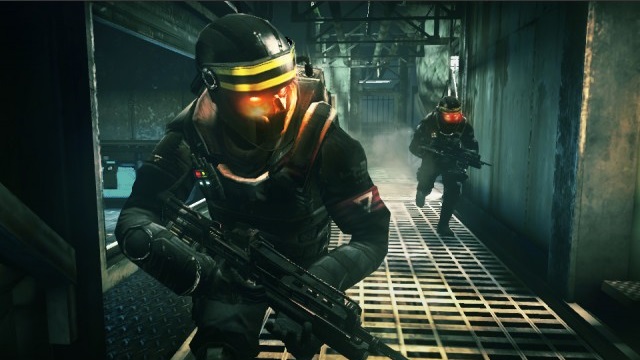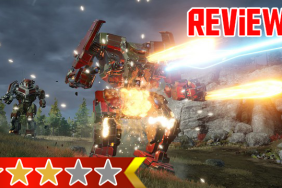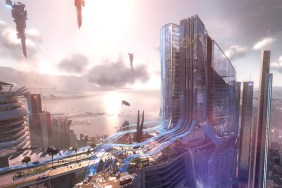Space Nazis: It turns out some of them aren't all that bad?
I won't deny it: I like the Killzone franchise. Its art design is gorgeous—whether you're on the spartan but clean-lined ISA planet Vekta or the gritty rusty, urban, decayed fantasy of Helghan, it always looks beautiful. After the beating the franchise took for Killzone 2 not looking as good as their initial PS3 target-video, it's been in the best interest of Guerrilla Games to make it look amazing. I even like the multiplayer, something I usually have a general "ho-hum" attitude about.
Killzone: Mercenary ports most of what works, and also what doesn't, in the Killzone franchise to the Playstation Vita. Killzone as a franchise has always been a little odd in that your character has the maneuverability of an injured manatee on land, but it balances for this by not having your opponents be particularly maneuverable or extremely deadly, either. You sort of lumber along and shoot people in the face—the most effective place to shoot since the rest of the head is usually covered by a helmet that can take some shots—all while people yell at you over coms. It is, to my knowledge, the best handheld Space Nazi-killing first-person shooter available on the handheld market.
The story is barely better than those of previous Killzone titles. As Arran Danner you play as a mercenary hired by the ISA to do some dirty work during the events of the prior games. It's kinda cool to get to hear Brian Cox again as the fascist Emperor of Helghan and Visari delivering speeches over loudspeakers. Eventually, there's a plot that develops with a boy and a viral weapon and some bad ISA officers and good Helghast, allowing you to see the conflict from the ground up on both sides. Still, it's little more than a window dressing for a campaign that is , more than the prior games, "Space Call of Duty Future Warfare."
Where Mercenary innovates on prior entries is Danner's relationship with arms dealer BlackJack, who provides him weapons for money earned during the missions, and the inclusion of stealth. Money can be earned by killing, more for headshots, stealth kills, interrogations, hacking, or passing through an area undetected. It's possible to play through Mercenary largely undetected, and on the Veteran (Hard) difficulty, playing with stealth makes some sections of the game easier.
The Brutal Melee system of prior games has been adapted so that sneaking up behind an opponent silently will get you points as an "Assassin" and doing so to an enemy officer will prompt an "Interrogation" touch-screen quick-time event. Successful interrogations collect "intel" that adds story elements, which will add replay value for completionists. In fact, the material in the "intel" is often better written than the actual game's plot.
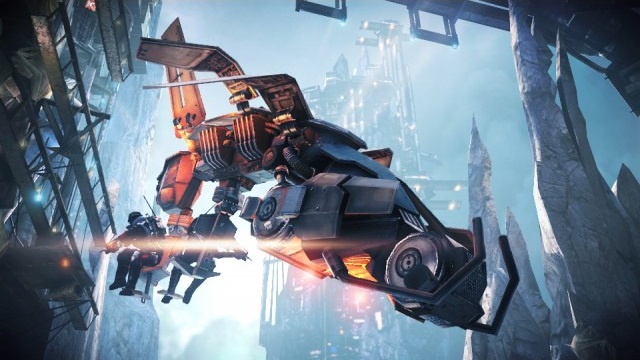
Perhaps the coolest feature, or weapon that you can buy from BlackJack, is the VAN-Guard Systems. The VAN-Guard is a portable wrist computer that Danner uses during the game, and BlackJack sells you special weapons you can control with it, including an orbital laser, a portable lock-on missile launcher you activate by tapping your target on the front screen, invisibility, an energy shield that protects your field of view, and a remote-controlled drone that attacks with claw-like pincers. Depending on the weapon, you either have a limited number of attacks or limited time to use it before it runs out. The VAN-Guard recharges over time or can be refueled by purchase at one of BlackJack's glowing blue ammo crates.
While still enjoyable, Mercenary's campaign often feels either derivative of modern military shooters or limited in choices. It's a game that often has the option to play through sections of it stealthily, only to have it suddenly switch to run-and-gun, prompting you to run to one of BlackJack's crates, the only place in-game where you can change your weapon loadout. There's also a moment near the end of the game where BlackJack, acting as your conscience, tells you you'll have to make a moral decision soon. Well, that's a lie: The game makes the decision for you. It's not exactly unusual for a military FPS to streamline the experience, but it might have been nice to not have been teased with the idea of a choice.
It's a good thing then that multiplayer in Mercenary is the highlight. It's divided into standard ISA versus Helghan matches, with three different play modes: Mercenary Warfare (Deathmatch), Guerrilla Warfare (Team Deathmatch), and Warzone (a multi-event game with different team objectives that switch after a round). All the modes, but especially Warzone, are enhanced by the inclusion of the VAN-Guard.
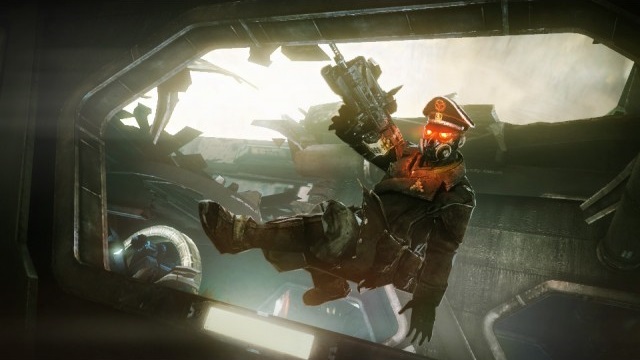
Dropping into the maps, which are large and have a surprising amount of vertical gameplay, are VAN-Guard capsules, which the player must activate to be able to use their VAN-Guard systems or abilities. When these capsules drop, they appear as yellow dots on the map, and because of the advantages these extra attacks provide, they become focal points for multiplayer matches in Mercenary and Guerrilla Warfare matches.
In Warzone matches, the capsules are sometimes used as objectives themselves, where in one mode, activating them starts the hacking mini-game, a quick puzzle-game that involves matching shapes, but during which the hacker is completely vulnerable to attack. Another mode in Warzone involves Interrogating opponents, also during which the player is vulnerable while interrogating, but if the interrogation quick-time event is completed, it grants the player access to enemy locations on their map.
Killzone: Mercenary is still an enjoyable game, though the story and some gameplay elements are derivative. It's a beautiful port of the series, with the highest graphic fidelity of any game I've yet seen on the PS Vita. The multiplayer, especially, is fantastic, and adds a new layer to the game with the VAN-Guard.
-
Looks amazing!
-
Poor maneuverability for player and NPCs
-
VAN-Guard abilities are awesome
-
Story and gameplay just the same-old military shooter
-
Stealth gameplay option
